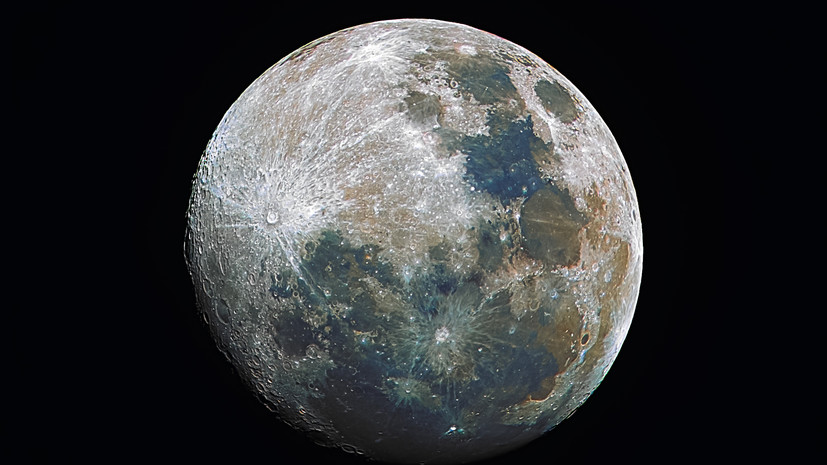Researchers from the Laboratory of Geochemistry of the Moon and Planets of the Geochemical Institute of the Russian Academy of Sciences have found out which lunar rocks contain the highest concentration of helium isotopes and in which areas of the Earth's natural satellite there are rich deposits of this raw material.
The press service of the institute spoke about the RT study.
The results are published in Advances in Geochemistry, Analytical Chemistry, and Planetary Sciences.
The authors of the work found that the concentration of
helium isotopes in regolith (lunar soil.
-
RT ) depends on the chemical composition and structure of the crystal lattice of the elements that make up various lunar rocks.
So, in volcanic glass, helium is present in a very low concentration, as in the minerals of lunar continental rocks - plagioclase anorthite and bytonite.
Lunar soil sample
Gettyimages.ru
© Yang Bo / China News Service
The mineral ilmenite contains the most helium - on Earth it is a raw material for titanium smelting.
On the Moon, ilmenite is included in marine basalts (rocks located in the so-called lunar seas), its content in the total volume of rocks varies from 1 to 20%.
According to scientists, the richest helium deposits are located in two regions of the Moon - in the Sea of Tranquility and in the Ocean of Storms.
The authors estimate the reserves of helium-3 isotopes in large lunar deposits at 210 thousand tons, and helium-4 - at 560 million tons. At the same time, the total reserves of helium-3 on the Moon are about 1.3 million tons, and helium-4 - 3.6 billion tons
To map out helium deposits on the Moon, scientists examined lunar soil samples brought back to Earth by Soviet lunar robots and the Apollo manned missions.
They also used data from a spectral analysis of the surface of the moon.
Recall that helium is a valuable raw material that is extracted from natural gas on Earth and, due to its properties, is widely used in various fields - in aviation, rocket and space, electronics, nuclear industry and medicine.
At the same time, the helium-3 isotope is practically absent on Earth, and its reserves could form on the Moon due to the fact that the lunar surface is constantly exposed to the solar wind.
The earth is protected from this flow of ionized particles by a magnetic field.
In the future, helium-3 may become an alternative fuel for thermonuclear energy - its advantages include the absence of radioactivity.
Also, this raw material can be used in various technological processes during the exploration of the moon.

